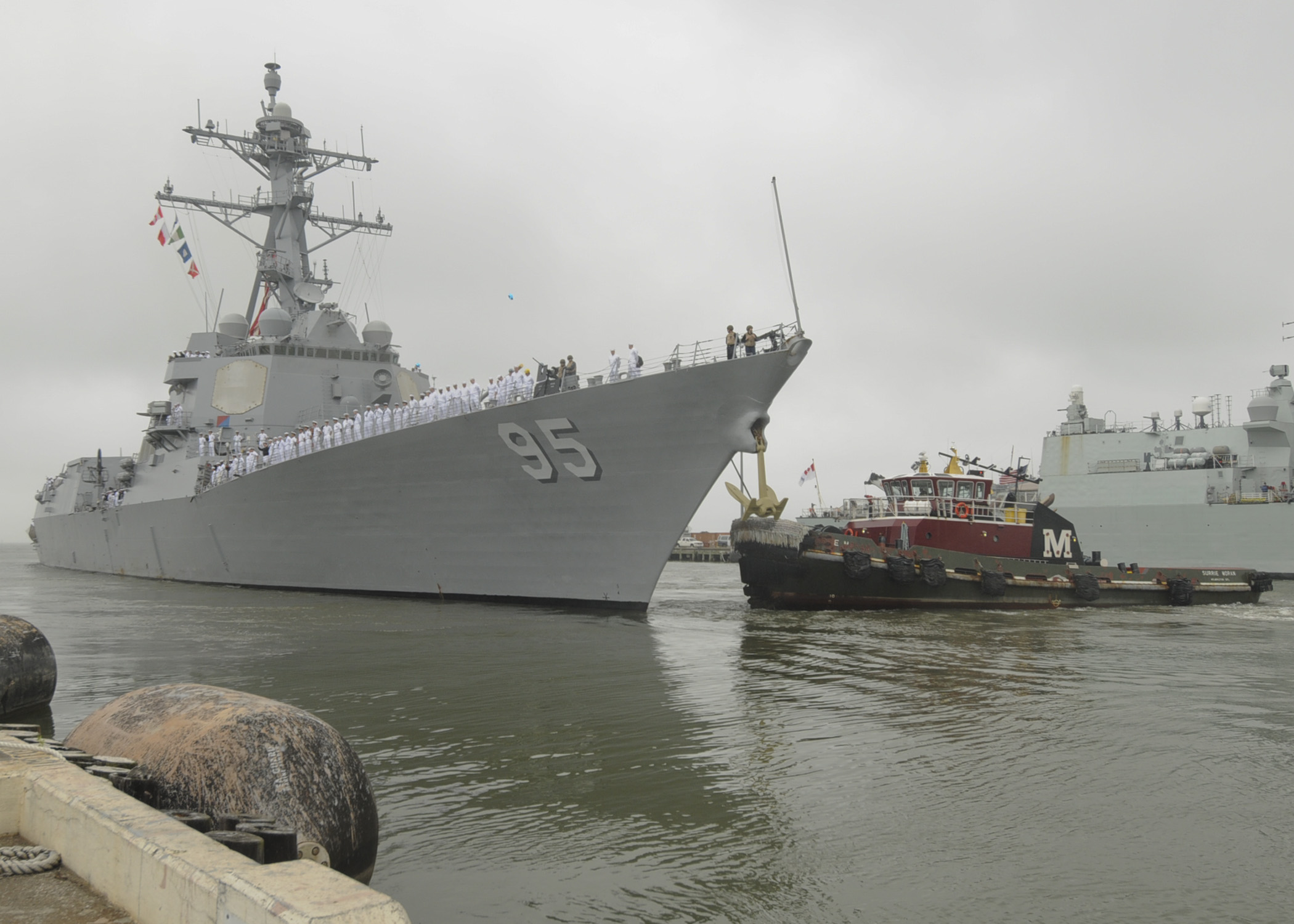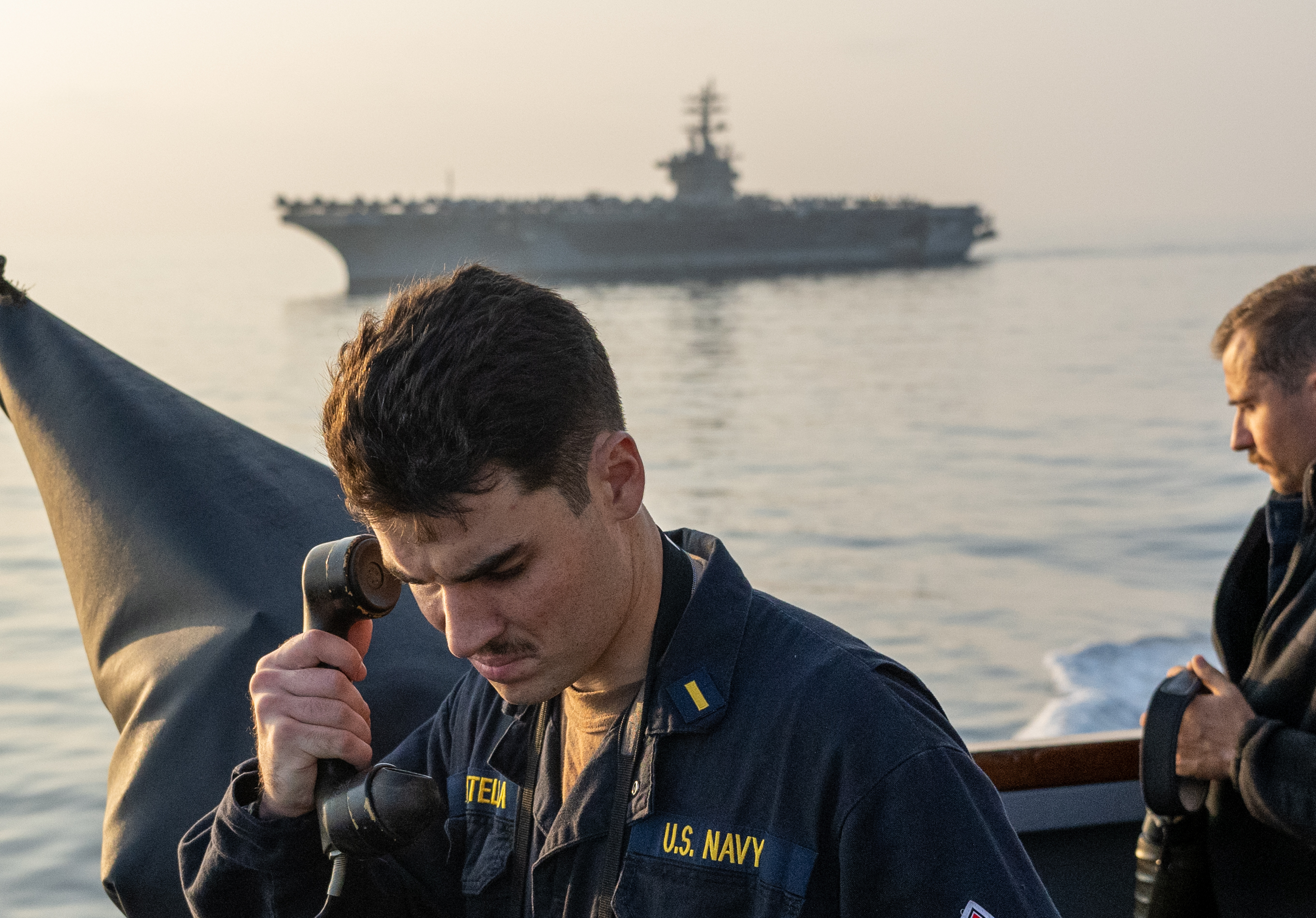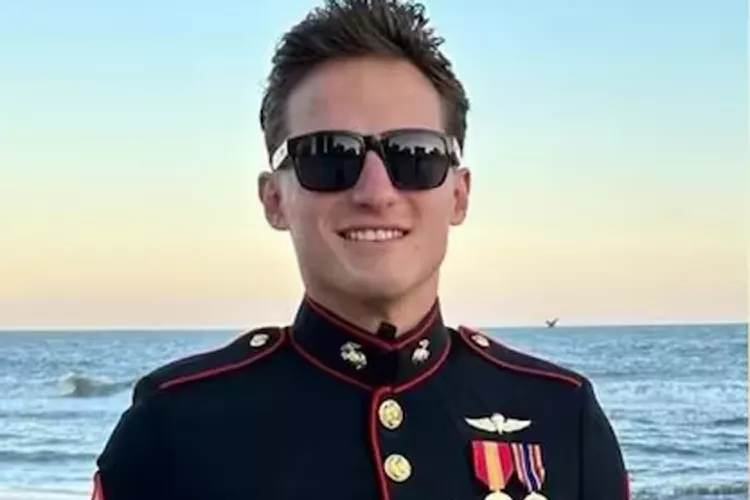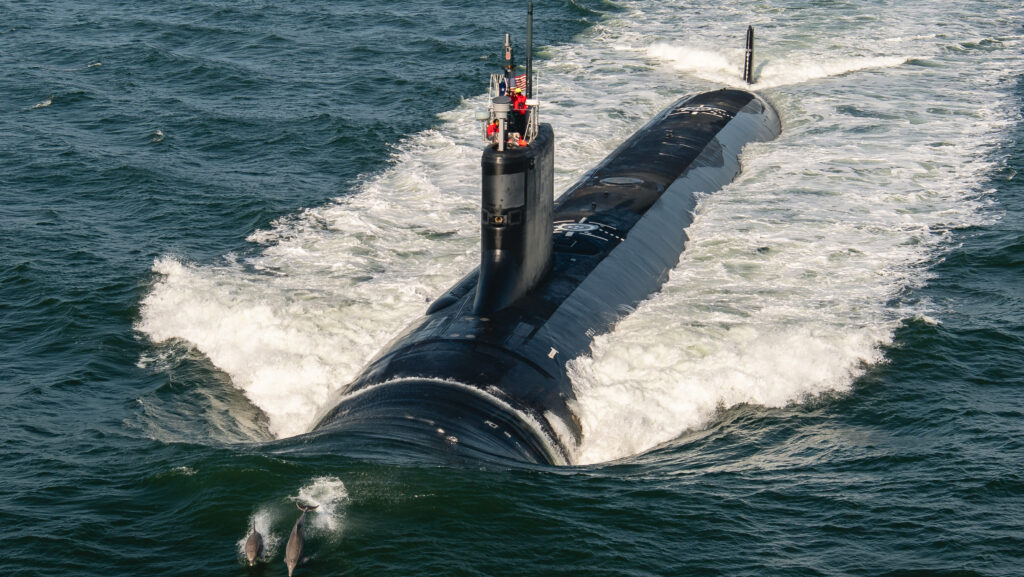
The guided missile destroyer USS James Williams (DDG-95) returned to homeport late last week following an eight-month deployment in which the senior leadership triad was removed at sea and later convicted of charges of dereliction of duty.
The ship returned to Naval Station Norfolk, Va. on Saturday under the command of new commander — Cmdr. Heidi Haskins — after the independent deployment that passed through the Mediterranean, the Suez Canal and time off Africa’s eastern coast.
Williams left Norfolk in May for the deployment — primarily designed to represent the U.S. in a series of partner engagement exercises.
However, the deployment was marked by a rare upset in the command structure of the destroyer and a months long command climate investigation.
A month out a sailor had committed suicide onboard and a subsequent command climate investigation undertaken by Destroyer Squadron 2 (DESRON 2) laid blame on the ship’s leadership triad — CO Cmdr. Curtis B. Calloway, XO Cmdr. Ed. Handley and Command Master Chief Travis Biswell, according to a copy of the report recently obtained by USNI News.
During the investigation into the suicide, Navy leaders found a vindictive chiefs mess responsible for bullying sailors and faulted the XO and CO for failing to keep senior enlisted under control, according to the investigation.
“Cmdr. Calloway was either willfully blind to the problems on board his ship or he was in an extremely negligent state of denial,” Rear Adm. Andrew Lewis, commander of Carrier Strike Group 12, wrote in a Sept. 26 endorsement of the investigation, reported the Navy Times.
“He owned the culture that, I believe, contributed to the suicide.”
All three were removed from the ship at sea on Sept. 16 — a rare occurrence on a U.S. ship.
Following their removal, Calloway, Handley and Biswell were convicted of “dereliction of duty” in an October non-judicial punishment hearing before Capt. Fred Pyle, commander of DESRON 2. Additionally, Biswell was also found, “drunk and disorderly.”
The crew was largely inexperienced before departing on the deployment.
“It was the first deployment for around a 100 sailors — almost a quarter of the maximum 380 person crew (DDGs typically operate with smaller crews sizes, around 290) and a third of the sailors only reported to Williams two months before the ship left,” USNI News wrote in October.
Additionally, Biswell was a 15-year CMC, a length in service that several sources told USNI News was unusually short for the position.





